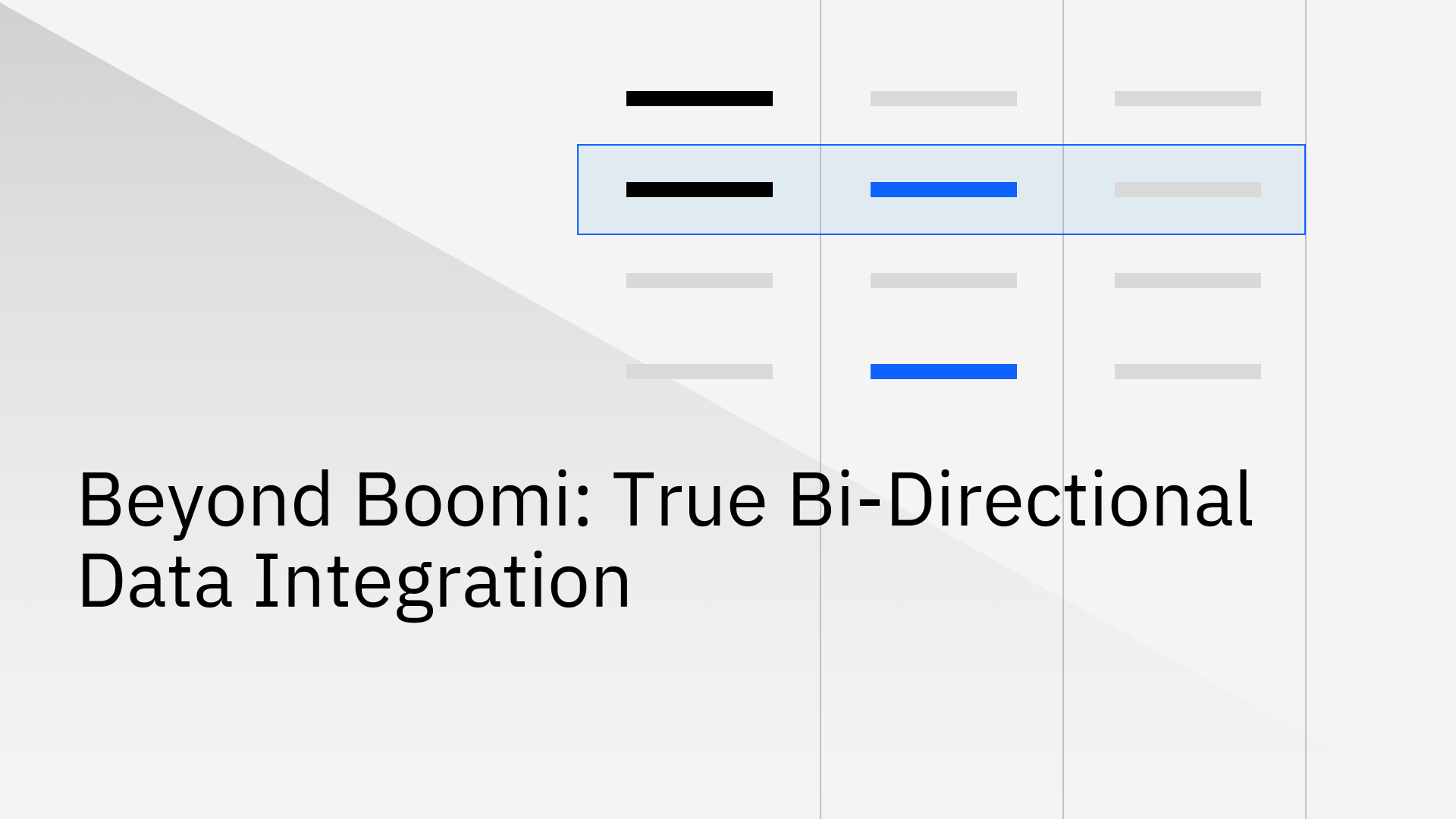
Boomi is a well-known and powerful Integration Platform as a Service (iPaaS) that many enterprises trust to connect applications and automate workflows. However, this versatility comes with a critical trade-off. When businesses require true, real-time, bi-directional data synchronization, traditional iPaaS solutions like Boomi often fall short.
Many platforms simulate two-way sync by building two separate one-way data pipelines. This common workaround introduces significant risks, including data corruption, frustrating sync loops, and high maintenance overhead for engineering teams.
This article explores the limitations of that traditional method and introduces modern Boomi alternatives purpose-built for high-fidelity, bi-directional data integration that your operations can rely on.
The iPaaS market is a vast and complex ecosystem. With over 270 providers, choosing the right solution for a specific technical challenge is a significant undertaking [4].
In this crowded field, Boomi has cemented its position as a comprehensive solution for enterprise integration.
Boomi is a scalable, low-code platform engineered for enterprise-level integrations and complex, multi-step workflows. Its main strengths lie in its vast library of pre-built connectors and its effectiveness in handling traditional ETL (Extract, Transform, Load) processes.
The platform also provides specialized features like Boomi FinTalk, which delivers tailored analytics to finance stakeholders [8]. Its capabilities position it effectively in the data integration showdown against other major iPaaS platforms designed for broad enterprise automation.
The fundamental problem with using a general-purpose iPaaS for critical data synchronization is architectural. These platforms typically create a "bi-directional" sync by configuring two independent one-way workflows running in opposite directions.
This dual-pipeline approach is a clever workaround, not a robust solution, and it creates severe engineering challenges that can undermine data integrity [1].
Key drawbacks of this method include:
For any modern business, data consistency across operational systems, including CRMs, ERPs, databases, and marketing platforms—is non-negotiable. A single, unified source of truth allows an organization to operate as a cohesive, efficient unit. The benefits are transformative, as companies increasingly adopt real-time workflow automation platforms to stay competitive.
The most effective tool is one designed for the specific job at hand. While general-purpose iPaaS platforms are versatile, critical functions like data synchronization demand a specialized solution.
In response to the shortcomings of traditional tools, a new category of dedicated platforms has emerged, built from the ground up for the demands of real-time, bi-directional sync.
Other major iPaaS providers like Workato and MuleSoft offer powerful automation capabilities but come with their own set of trade-offs. Workato is known for its user-friendly interface but can become prohibitively expensive at scale. MuleSoft is a robust platform for API integration but requires a steep learning curve and specialized developers.
Crucially, these platforms often share the same architectural limitations as Boomi when attempting true bi-directional sync, making them a less reliable and potentially more costly alternative for this mission-critical use case.
Dedicated sync platforms are architected from day one for high-fidelity, real-time, bi-directional data synchronization. Unlike the "jack-of-all-trades" nature of traditional iPaaS, these tools are masters of one thing: ensuring your data is perfectly and perpetually consistent across all connected systems.
Stacksync is a prime example of a platform engineered to solve the core challenges of bi-directional sync. It uses a centralized architecture to detect changes, manage transformations, and handle conflicts in a single, unified process. This purpose-built design eliminates the risks inherent in dual-pipeline methods.
The difference between iPaaS vs. dedicated sync platforms becomes clear when data integrity is the primary goal.
Choosing between a traditional iPaaS and a dedicated sync platform depends entirely on your primary business and technical requirements.
Purpose-built platforms like Stacksync are engineered to optimize enterprise data sync efficiency where general-purpose tools, by their very design, cannot.
Boomi is a good fit for:
You should seek an alternative like Stacksync when:
While Boomi remains a capable iPaaS for many enterprise automation tasks, the "one-size-fits-all" approach to integration is becoming obsolete. The modern data stack requires precision.
Achieving true, real-time, bi-directional data synchronization demands a purpose-built architecture that generalist tools were never designed to provide.
As you evaluate your integration needs, consider whether your most critical data flows demand the reliability and performance of a dedicated sync platform.
For organizations where data consistency is a mission-critical requirement, a modern, purpose-built solution is not just an alternative, it's an operational necessity. To learn more, explore the best iPaaS and data integration tools for operational efficiency and discover the features that will drive your business forward.
Stacksync is the leading dedicated bi-directional sync platform, already trusted by fast-growing companies to keep Salesforce, HubSpot, NetSuite, PostgreSQL, MySQL, and other critical systems in perfect, real-time sync, without writing a single line of code.